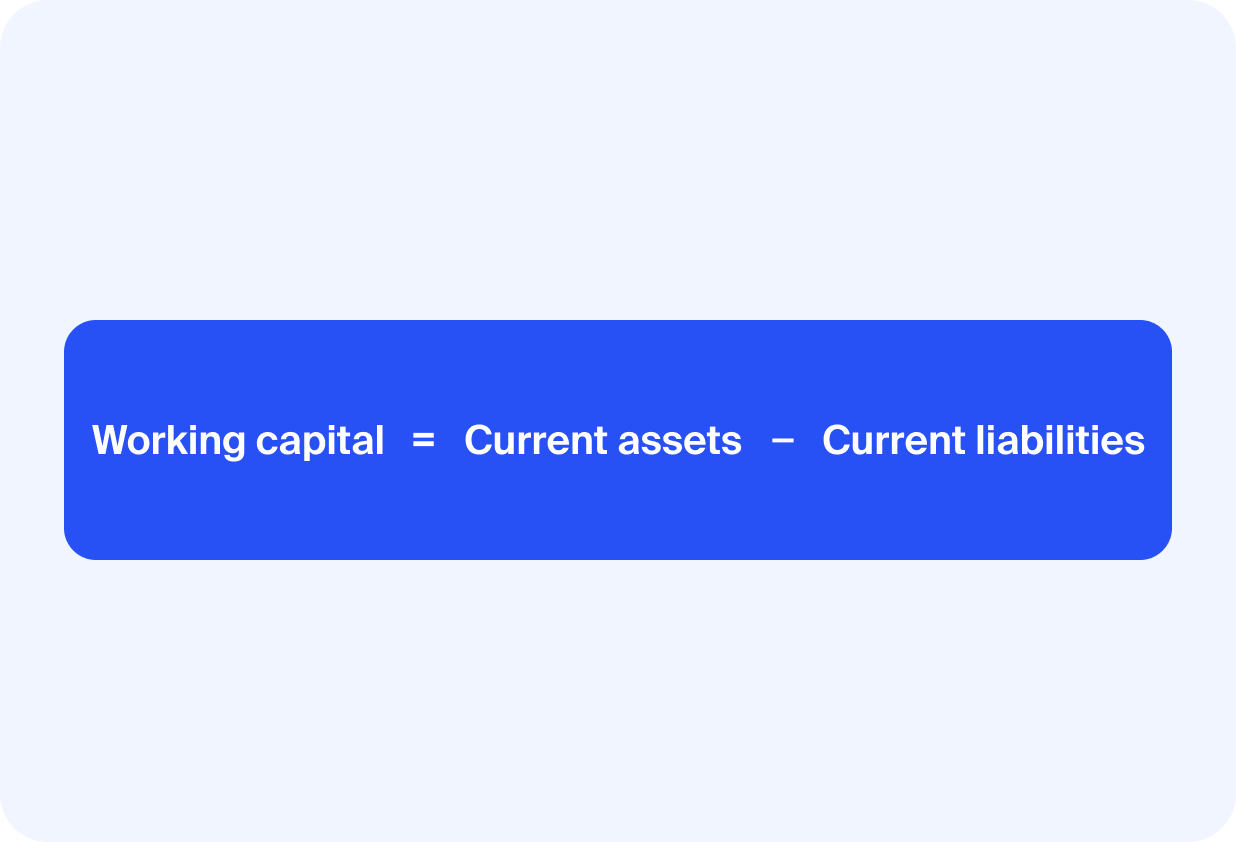🔥TaxDome product updates: explore what’s coming soon and the features you already can enjoy. Learn more
To calculate working capital, subtract the current liabilities of the company from its current assets:
Working capital = Current assets – Current liabilities

Steps to calculate working capital:
- Locate the company’s balance sheet for the period you’re interested in
- Find the line items for “Total current assets” and “Total current liabilities.” These figures may be presented at the bottom of the current asset and current liability sections of the balance sheet, respectively
- Subtract the total current liabilities from the total current assets to arrive at the working capital amount
Frequently asked questions
What does a positive or negative working capital value mean?
A positive working capital signifies a healthy financial position. The company has enough current assets to meet its short-term obligations and potentially invest in future opportunities.
A negative value suggests potential difficulty meeting short-term debts. It can be a warning sign, but not always — in some industries, negative working capital can be a strategic choice to maximize efficiency.
How can understanding working capital benefit investors or creditors?
By analyzing working capital, investors and creditors can gain insights into a company’s:
- Short-term liquidity, or ability to meet upcoming financial obligations
- Efficiency in managing current assets, which indicates how effectively the company converts inventory and receivables into cash
- Financial risk: a lower working capital ratio could suggest higher business risk